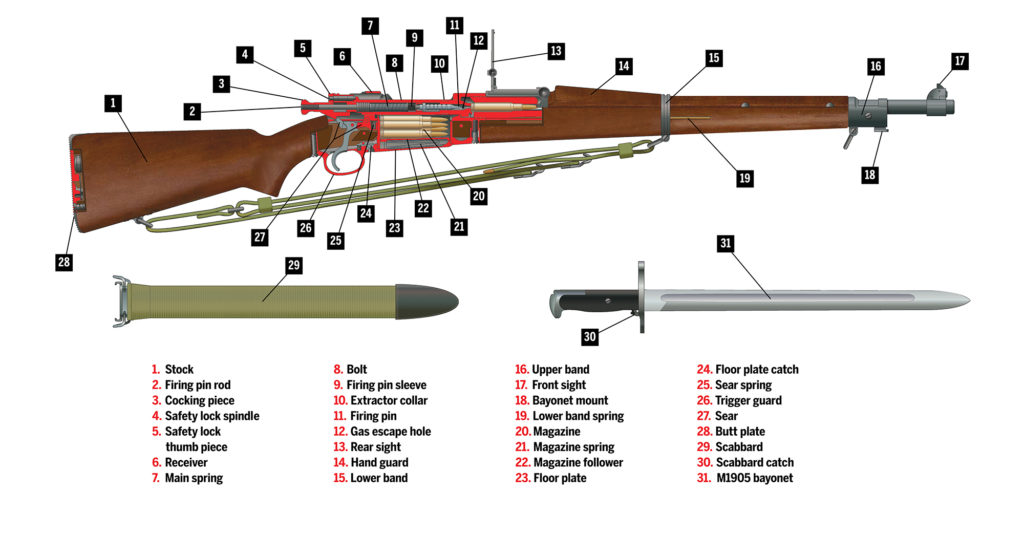
M1903 Springfield specs
- Length: 43.2 inches
- Barrel length: 24 inches
- Weight: 8 pounds 11 ounces
- Bore: .30 inches
- Effective range:1,100 yards
- Maximum range: 5,500 yards
- Muzzle velocity: 2,800 feet per second
In 1892, the U.S. Army adopted the Norwegian Krag-Jorgensen as its first bolt-action rifle. But during the 1898 Spanish-American War, the Krag was clearly outclassed by the Mauser M1893 used by Spanish troops, leading the Ordnance Department to order a new weapon.
What emerged from the Springfield Armory was essentially a copy of the Mauser — for which the Americans had to pay Mauser $250,000 in production rights — but it proved a good investment. Equally effective — and also German-inspired — was the spitzer round developed for it, officially designated the “cartridge, ball, caliber .30. Model of 1906,” but better known as the .30-06 (“thirty aught-six”), which remained the standard-issue U.S. military round until the 1954 introduction of the 7.62×51 mm NATO round.
Issued in 1905, the M1903 Springfield turn-bolt rifle held five rounds fed into an internal magazine using a stripper clip. It earned a reputation for unmatched accuracy and durability during and after World War I, until the semiautomatic M1 Garand began to eclipse it in the mid-1930s. Springfield introduced gunsights for the M1903A3 compatible with those of the Garand, allowing U.S. troops to be trained in both types during World War II.
Even after the Garand became the standard-issue infantry weapon, the M1903 remained in favor as a sniper’s weapon — especially in its specialized M1903A4 version — during World War II, Korea and Vietnam. Its continued popularity in civilian circles kept it in production until 1949, with a total of 3,004,079 built. MH
historynet magazines
Our 9 best-selling history titles feature in-depth storytelling and iconic imagery to engage and inform on the people, the wars, and the events that shaped America and the world.





